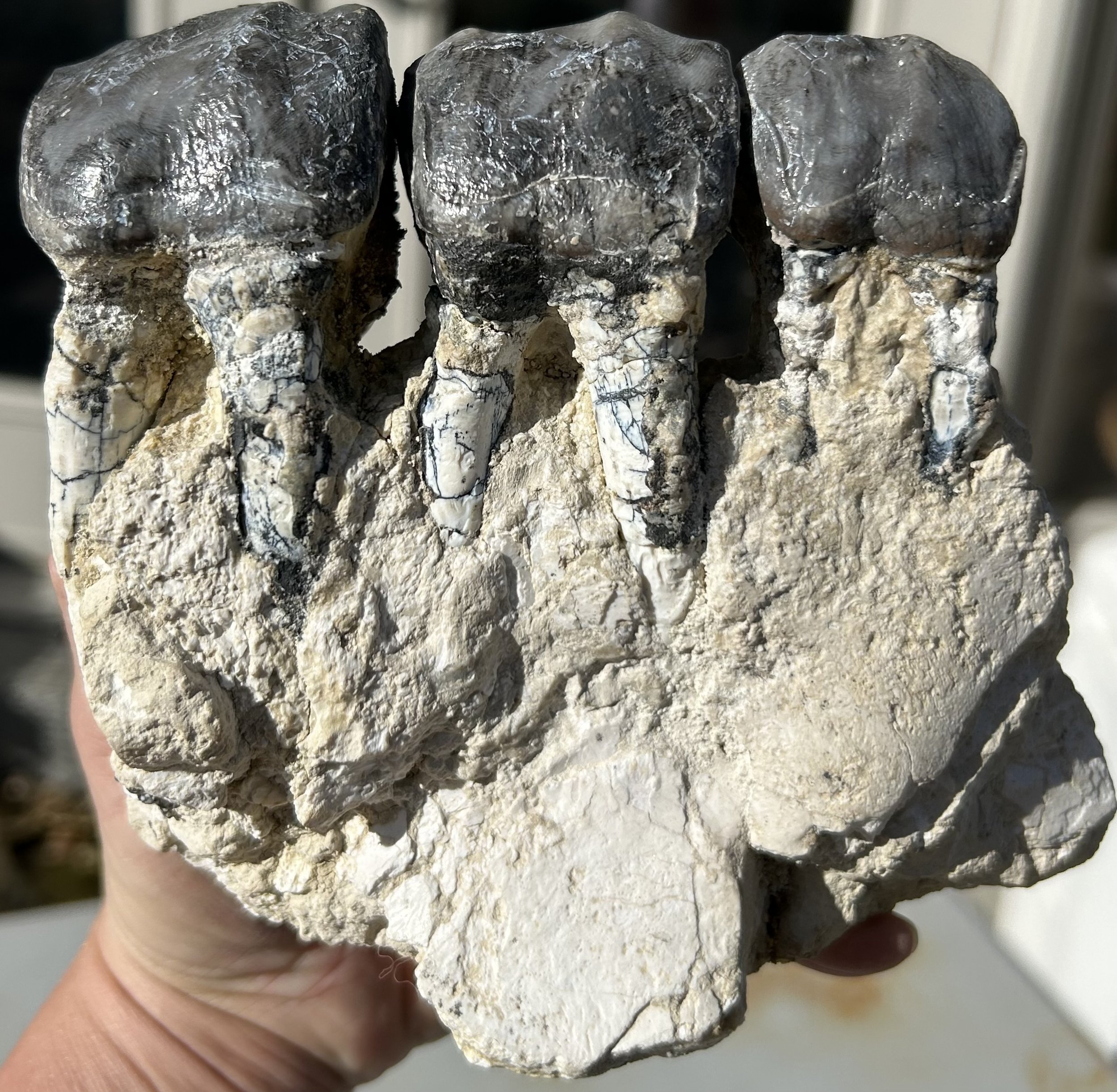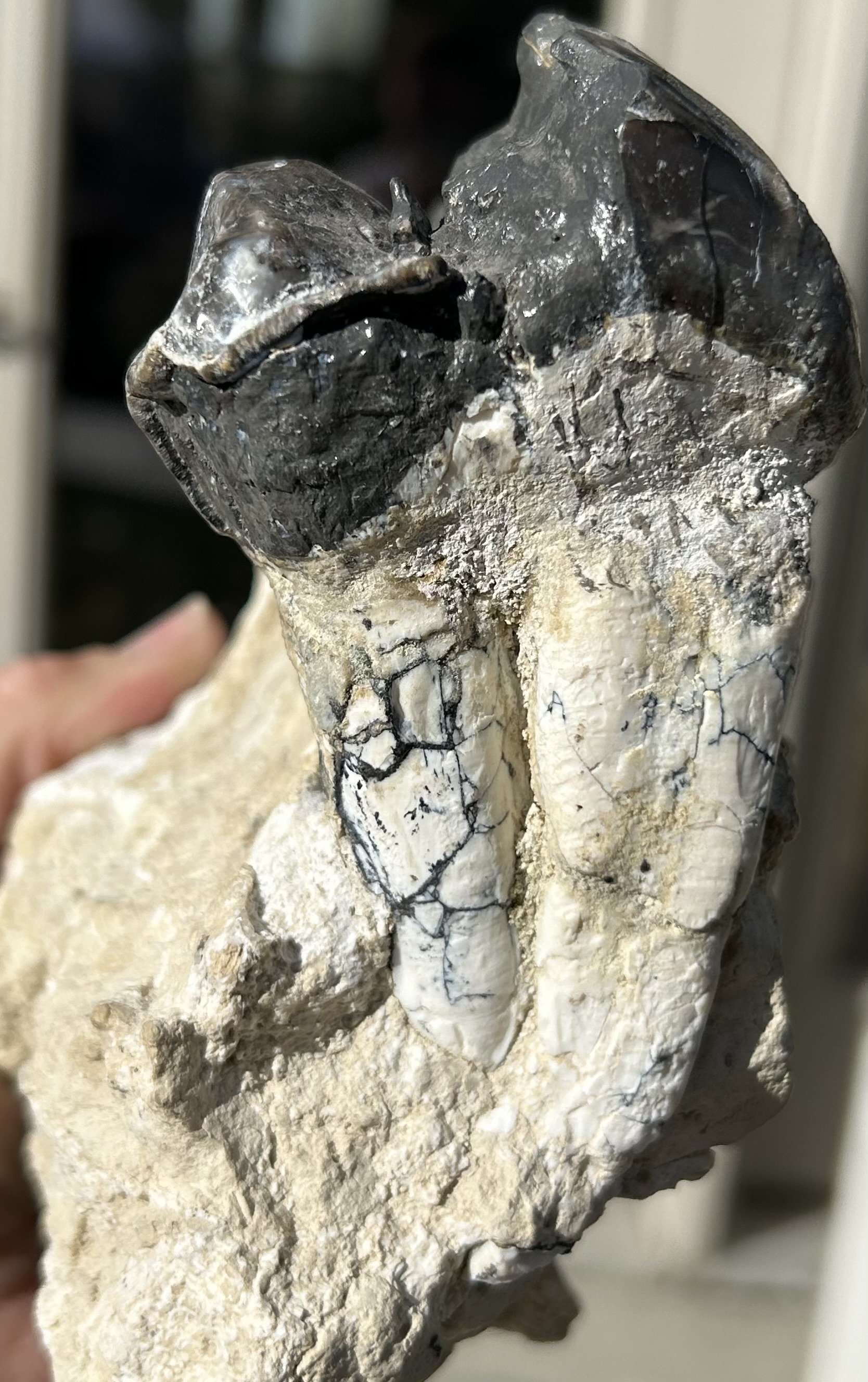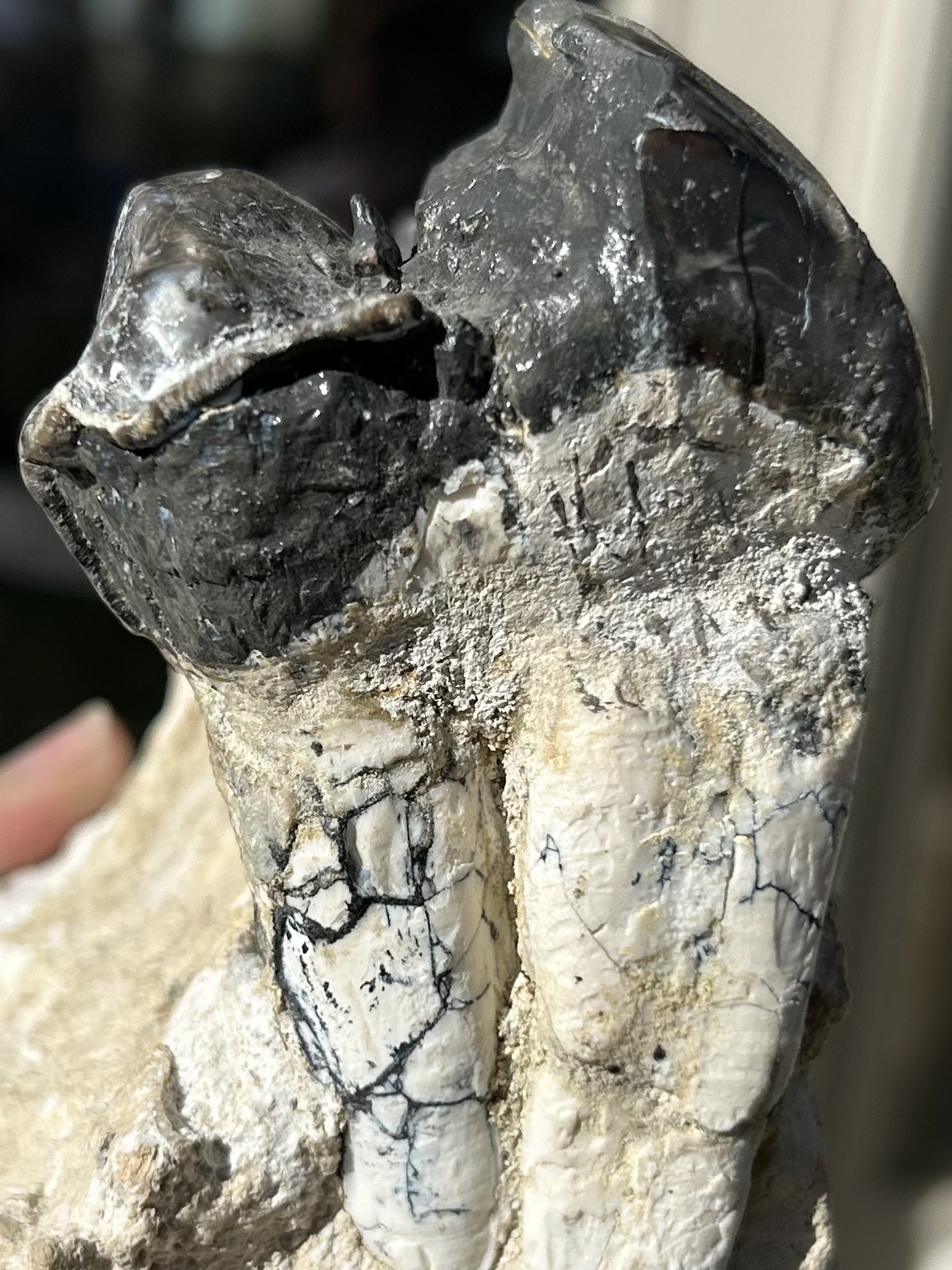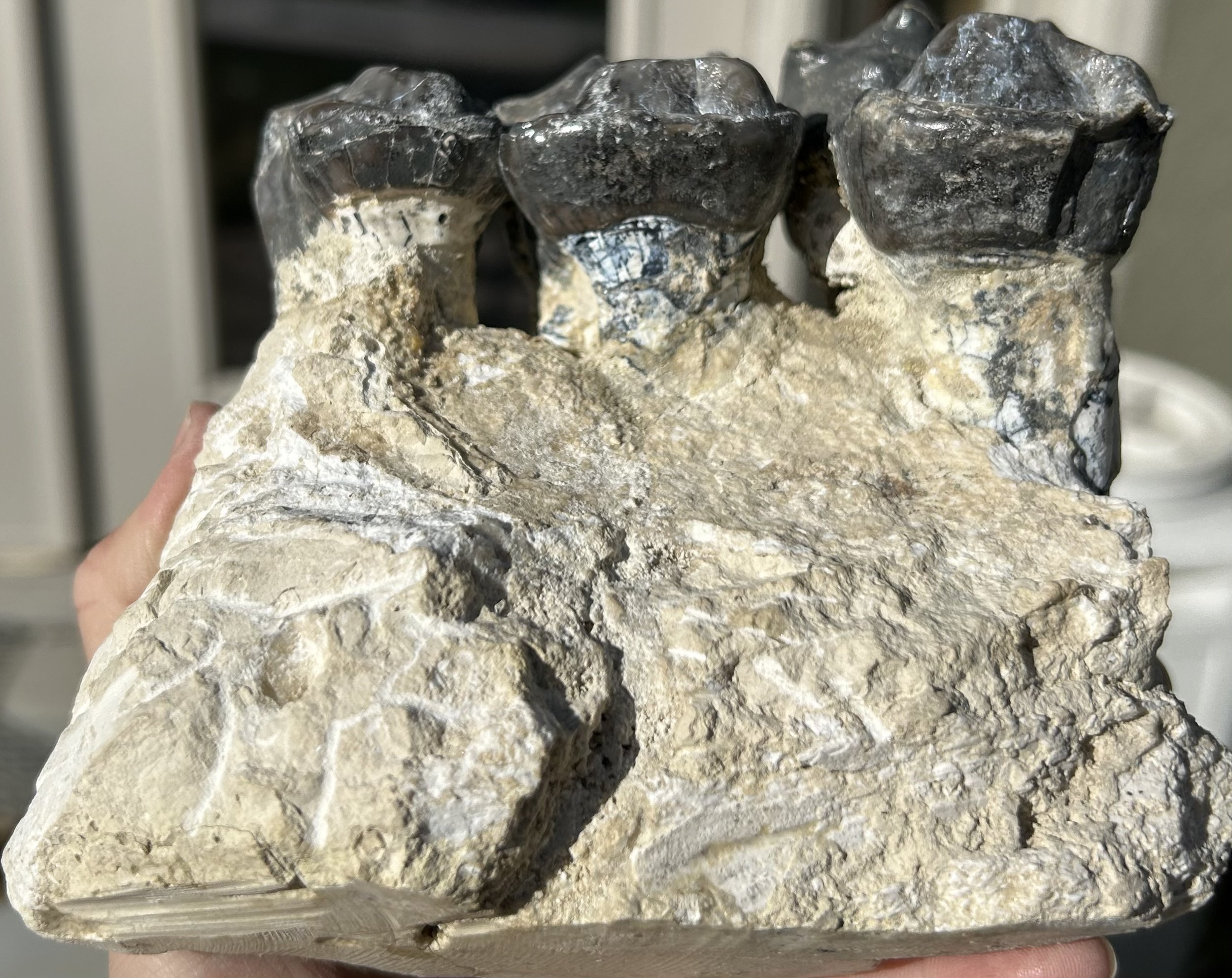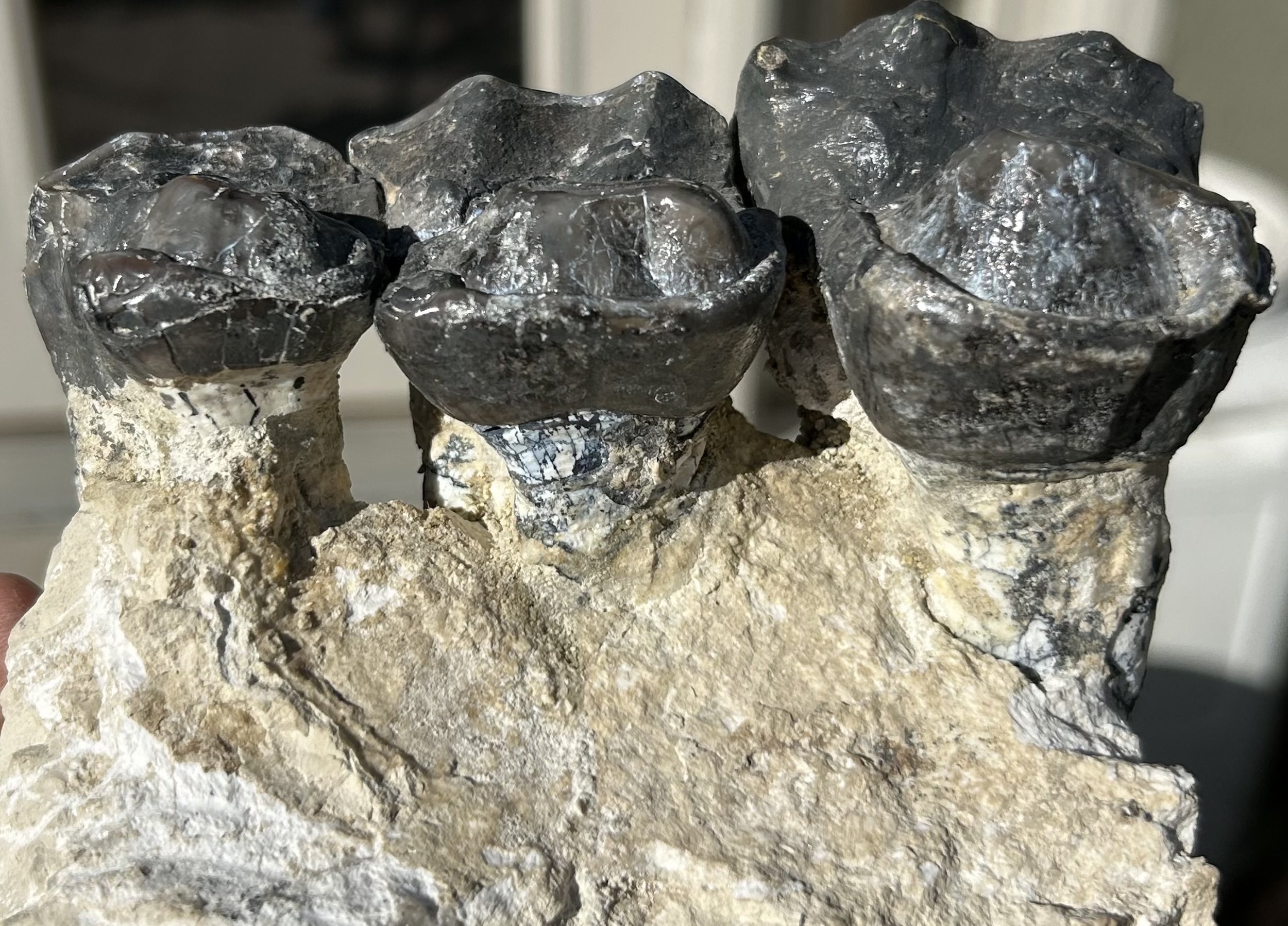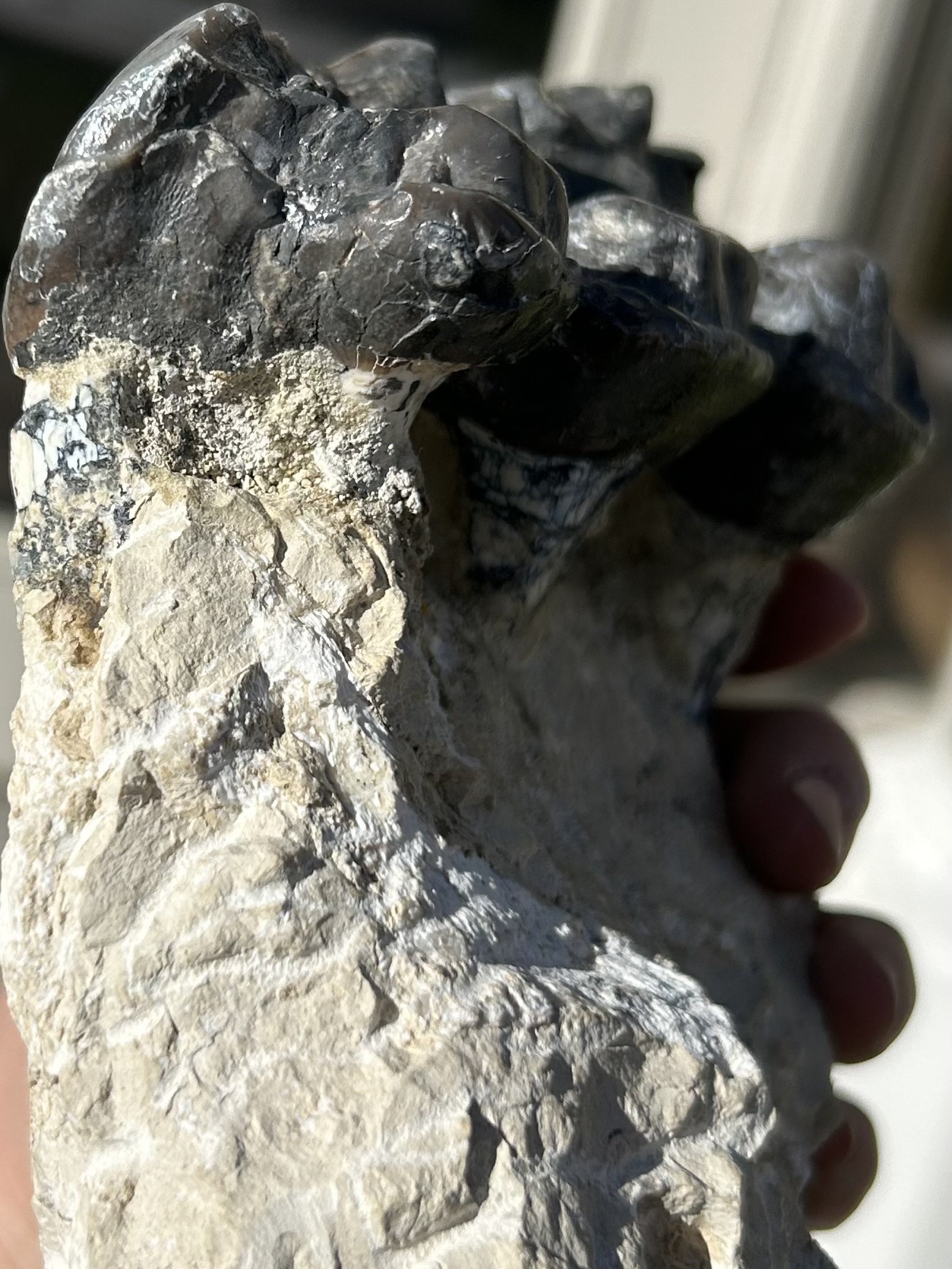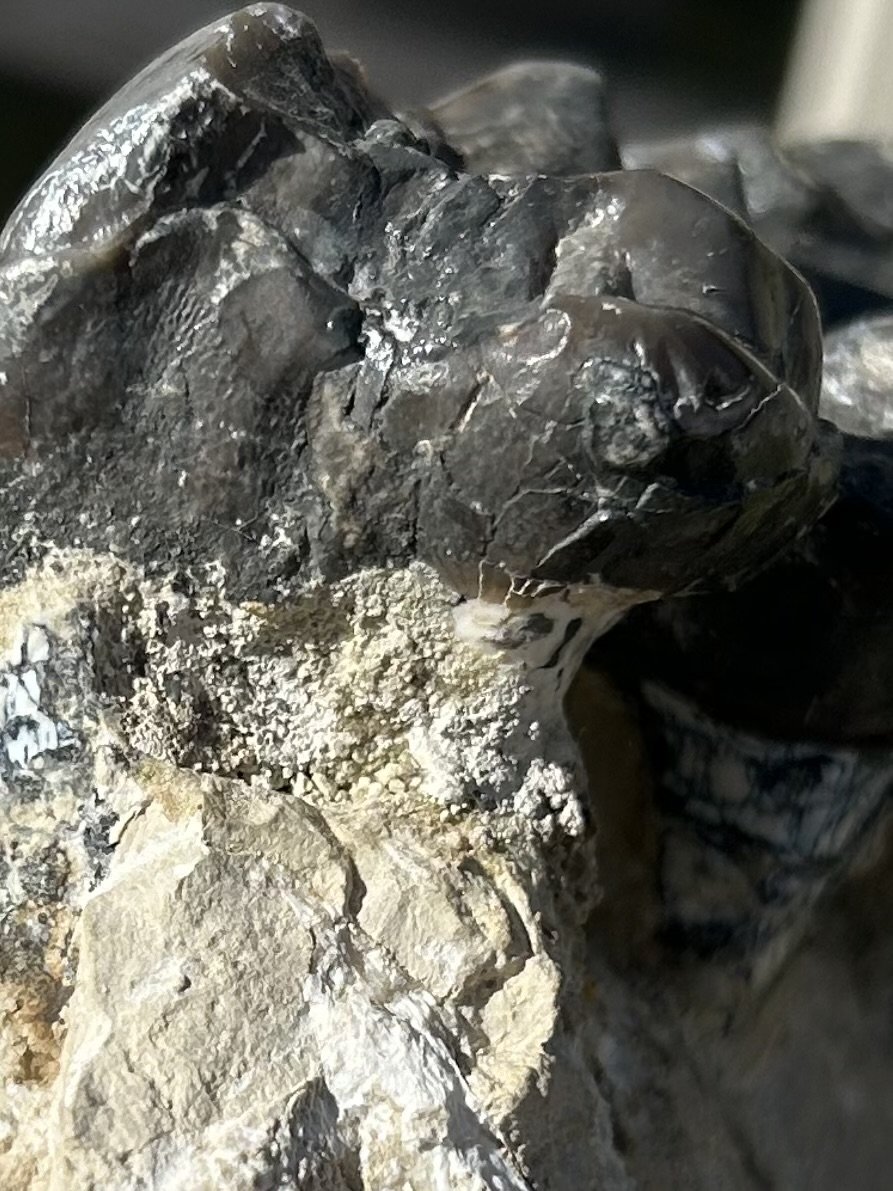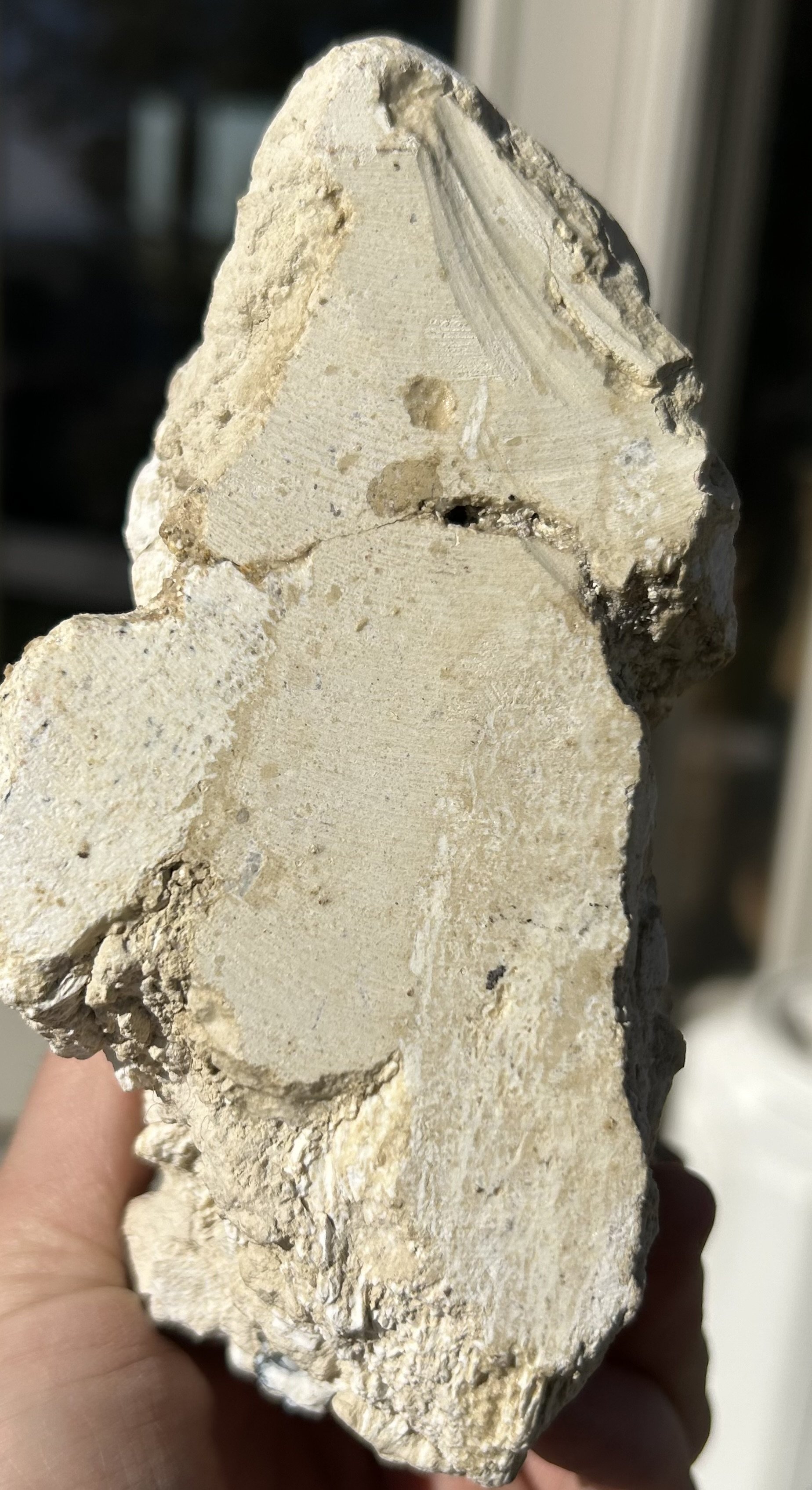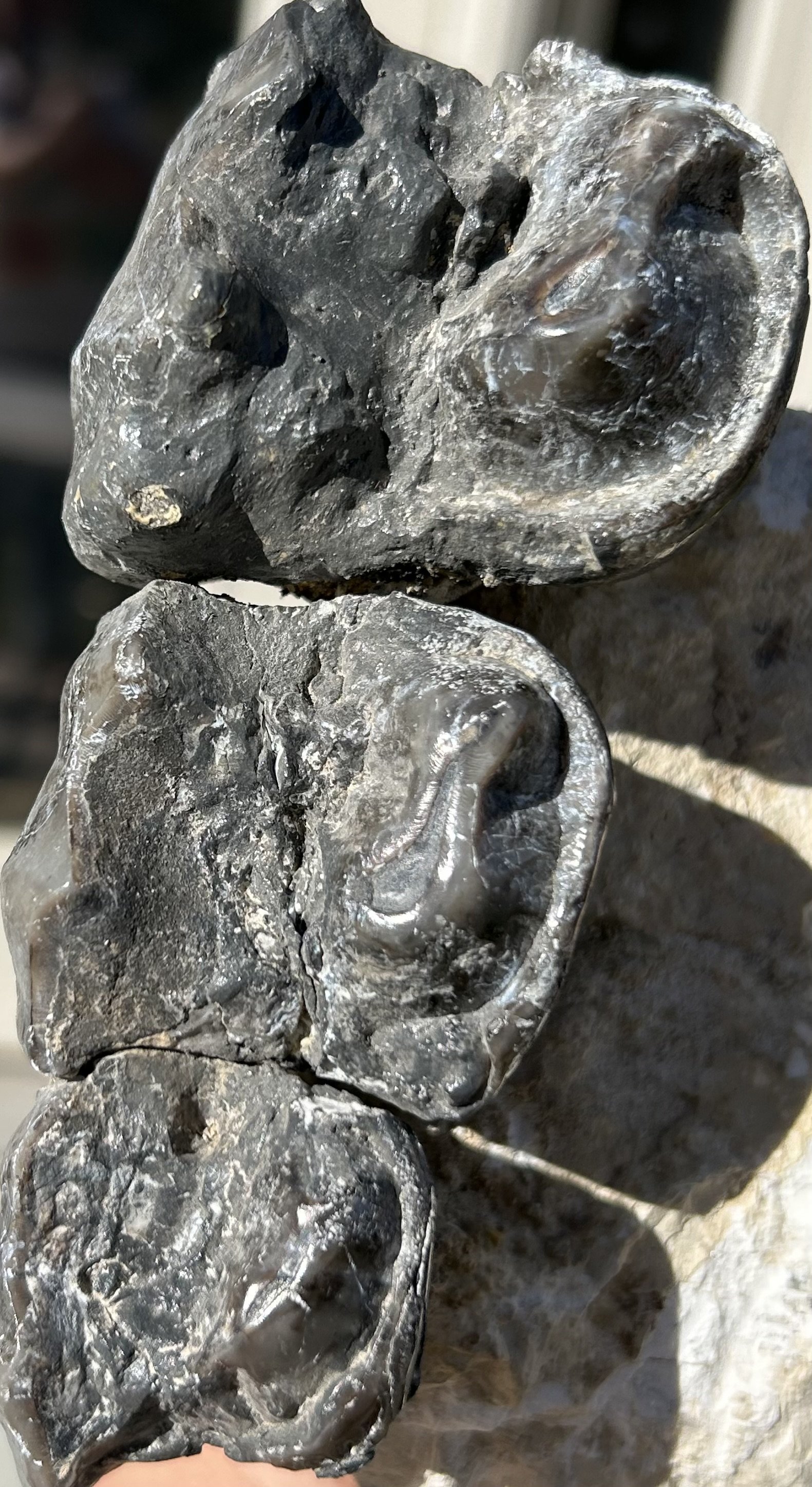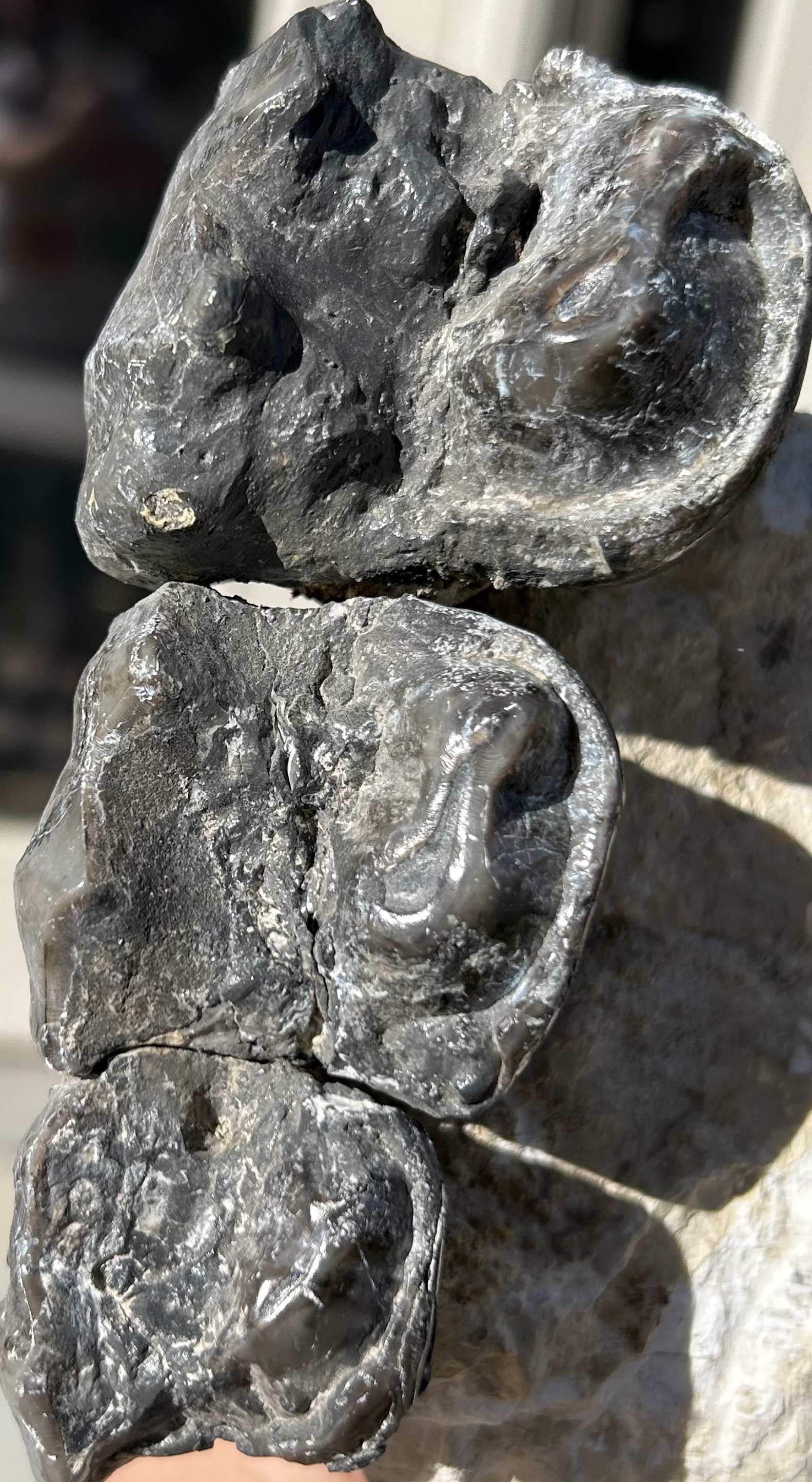Brontotherium Eocene Teeth Fossil
This piece is a large set of teeth fossils from the Brontotherium, collected from the Eocene Epoch era White River Formatio in South Dakota, making it approximately 33 million years old.
SPECIES
Brontotherium Eocene
AGE/ERA
Eocene Epoch (33 million years ago)
LOCATION
South Dakota
FORMATION
White River Badlands
DIMENSIONS:
Length: 4.5”, Width: 2", Depth: 4.5”
RESTORATION:
Crack fill restoration
This piece is a large set of teeth fossils from the Brontotherium, collected from the Eocene Epoch era White River Formatio in South Dakota, making it approximately 33 million years old.
SPECIES
Brontotherium Eocene
AGE/ERA
Eocene Epoch (33 million years ago)
LOCATION
South Dakota
FORMATION
White River Badlands
DIMENSIONS:
Length: 4.5”, Width: 2", Depth: 4.5”
RESTORATION:
Crack fill restoration
This piece is a large set of teeth fossils from the Brontotherium, collected from the Eocene Epoch era White River Formatio in South Dakota, making it approximately 33 million years old.
SPECIES
Brontotherium Eocene
AGE/ERA
Eocene Epoch (33 million years ago)
LOCATION
South Dakota
FORMATION
White River Badlands
DIMENSIONS:
Length: 4.5”, Width: 2", Depth: 4.5”
RESTORATION:
Crack fill restoration
*Brontotherium: The Thunder Beast of the Eocene Epoch*
The Brontotherium, a massive herbivorous mammal from the Eocene epoch, stands as a symbol of prehistoric power and majesty. Roaming the plains and forests of North America approximately 38 to 33 million years ago, this impressive creature belonged to the group of extinct mammals known as brontotheres, distant relatives of modern-day rhinos.
Characterized by its immense size, the Brontotherium could reach up to 2.5 meters at the shoulder and weigh several tons. Its most distinctive feature was its pair of large, Y-shaped bony horns, which extended from the top of its skull. These horns were likely used for display, competition, or defense against predators. Despite its formidable appearance, the Brontotherium was a gentle herbivore, relying on its flat, grinding teeth to process tough vegetation like leaves and soft plants.
Fossils of Brontotherium, found in regions like the White River Formation, have provided significant insights into the mammalian ecosystems of the Eocene. This thunder beast’s imposing presence and evolutionary significance make it a key figure in understanding the transition of life after the age of dinosaurs.

